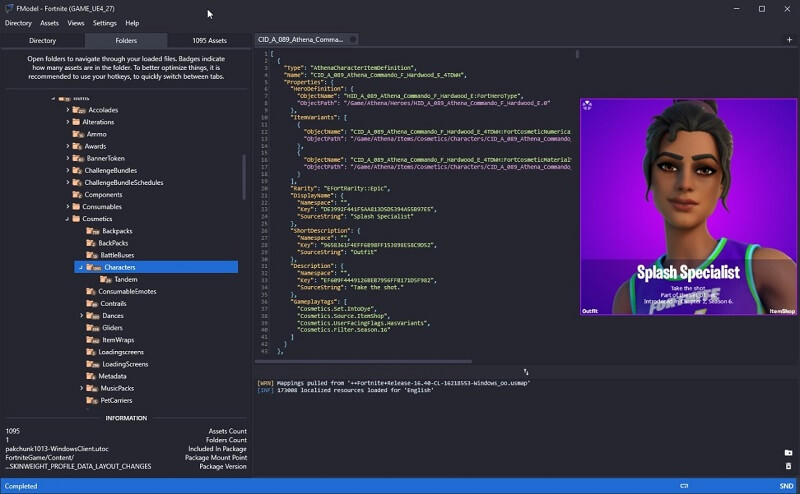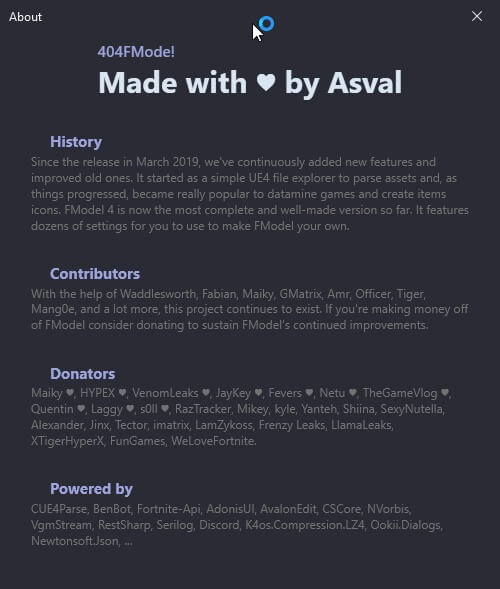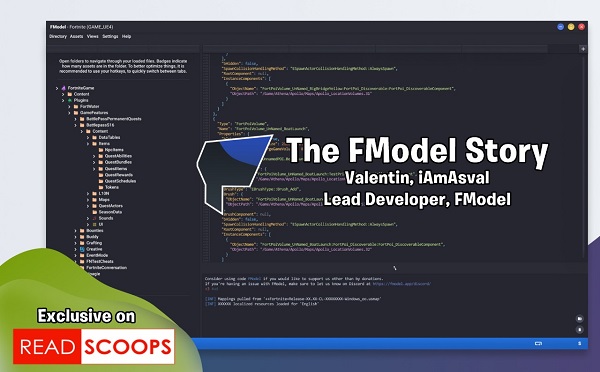Since its launch a few years ago, Fortnite has become one of the most popular battle royale games across platforms, enjoyed by players from across the globe. In the world of Fornite, we have many unsung heroes like those who bring in the latest leaks and versions.
We find many articles and conversations with Fortnite Dataminers and Leakers but for the first time, Read Scoops brings our readers to connect with the man behind FModel, one of the most powerful datamining tools for Fortnite and other UE4 Games. We are in conversation with Asval, the man who leads the FModel development team. Keep reading for more…
FModel social profiles  :
:
We get Valentin from your Github profile, so let’s start with knowing if this is your real name? And a bit more about you.
“Yes, my name is Valentin. I’m a 22-year old student from France.”
Your profile says you’re a data scientist and software developer. Tell us more about your profession…
“I’m a data scientist by profession and software developer by passion. As a data scientist, I work with companies and their data to help them take decisions. My role can go from helping the development team, to doing business intelligence and data visualization for the company.”
“As a software developer, it’s mostly about FModel and everything around – the software, the API, the support, the art direction, and the website soon… We try to use the most up-to-date technologies for both of these ‘work’ (ReactJS, NodeJS, Python, Typescript, C#, …) with the best tools as of today (Visual Studio, Rider, MongoDB, Figma, PowerBI, Informatica, …)
What inspired you to develop FModel? And how did you assemble your team?
“FModel came from the fact that, back in 2018, UModel (another open-source software for exploring Unreal Engine games’ assets) was not really optimized for Fortnite. It was working fine but there was so much more potential to exploit, seeing asset’s properties, generate icons, compare two versions of the game, and more.”
“So that’s how it started. An enhanced version of UModel, where both software completed each other. UModel can load games from UE1 to UE4 while we can only with UE4, UModel can preview and export meshes while we can’t yet. The team was assembled with the time; I worked alone for more than a year but now we are more or less 5 working on either the parser or the software but everyone is free to join.”

Can you tell us what role does each of team member on FModel have?
“Roles are not predefined; everyone can work on whatever he wants, whenever he wants, at least on open-sourced parts of FModel. That means the parser and the app. On other parts, for example the API, only trusted people have access to it even though there’s nothing sensitive inside.”
How do you’ll communicate when you need to make some changes or fix something on FModel?
“Everyone in the team is pretty much aware of the bugs to fix in FModel, we still have a Trello just in case. We don’t really communicate when it’s not a big fix, but when it involves breaking changes, we take advice from everyone if it’s UI/UX related or test all games if it’s on the parser side.”
ALSO READ: Interview with FNPedia founder, Hefin D’Souza
FModel is open source. What keeps you and your team motivated to keep going with development and keep fixing if anything breaks?
“To have the pleasure of going from something buggy to something working perfectly.”
FModel is one of the most popular utilities that Fortnite dataminers use and maybe even profit on. Have you thought of making a premium version?
“I prefer not thinking about the money some people can make, that’s how It works. The business model behind an open-source software is difficult. You technically can’t make money with the open-sourced part, so you have to make other parts paid to pay what cost money. In our case, there is no other part to profit on, we thought about making a premium version but I personally don’t trust the Fortnite community and I’m pretty sure this version would be reversed day one and share to everyone for free.”

What are your future plans for FModel? Any additional features you are working on?
“Well, the future of FModel is Unreal Engine 5. It’s already working using the open-beta version of UE5 but this version will change a lot in the upcoming months. We also plan to finally support meshes, at least their export, and I have no doubt that this feature will be the wall between two eras of FModel.”
We wish the 22-year old the best of luck for the future of FModel and all additional features that may come over the next few months and years. On a parting note, Asval said to our reader, “I hope you enjoyed reading the story behind FModel.” We hope for the same and if you did enjoy this, don’t forget to leave your likes and comments. For more such interviews and exclusive conversations with Fortnite and gaming fans from across the world, stay tuned to ReadScoops.com…
Sign-up to 1xBet and get a 100% first deposit bonus as a new user







